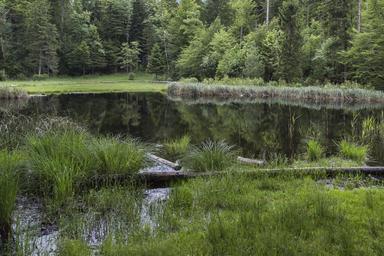Introduction
Growing plants in a controlled environment, such as a grow tent, has become increasingly popular among both hobbyists and professional growers. One of the most critical factors to consider when cultivating plants indoors is humidity. Maintaining optimal humidity levels can significantly impact plant growth, health, and yield. This article explores various techniques for increasing humidity in a grow tent effectively.
Increasing Humidity in a Grow Tent: Techniques That Work
Humidity is the measure of moisture present in the air, and it plays a vital role in plant transpiration, nutrient uptake, and overall health. For many plants, particularly tropical varieties, the ideal humidity range is between 40% to 70%. Here we’ll delve into practical methods to raise humidity levels efficiently.
Understanding Humidity Levels for Plants
Plants require specific humidity levels depending on their species. High humidity can help prevent issues like wilting and leaf drop. Conversely, low humidity can lead to stress conditions where plants become susceptible to diseases.
- Tropical Plants: These thrive at higher humidity levels (60%-80%). Succulents: Prefer lower humidity (30%-50%).
Why Is Humidity Important?
Impact on Plant Growth
Humidity directly influences photosynthesis rates and water absorption through roots. Ideal conditions encourage robust growth and flowering.
Disease Prevention
Proper humidity helps mitigate fungal infections and pests that thrive in overly dry or damp environments.
Techniques for Increasing Humidity
1. Using a Humidifier
One of the most straightforward methods for increasing humidity is using a humidifier. But should I close the door when using a humidifier? The answer depends on your setup; closing the door can help contain moisture within https://powerhousecc.org the tent.
Types of Humidifiers
- Ultrasonic: Creates fine mist; quiet and efficient. Evaporative: Uses airflow; self-regulating. Steam Vaporizers: Boils water; effective but energy-consuming.
2. Misting Plants Regularly
Misting your plants with water can temporarily increase humidity levels around them. This method works best for smaller setups or during specific growth phases.
How to Mist Effectively
- Use distilled water to avoid mineral buildup. Mist early morning or late evening to prevent leaf burn.
3. Water Trays or Pebble Beds
Placing trays filled with water beneath your plants can create localized humidity pockets. Adding pebbles helps increase surface area for evaporation.
Steps to Create Water Trays
Fill shallow trays with water. Place pebbles inside. Position under plant pots without submerging them.4. Increase Plant Density
By placing more plants in your grow tent, you can naturally increase local humidity through transpiration as they release moisture into the air.
5. Utilizing Natural Resources
Plants like ferns release moisture naturally through transpiration. Consider adding such water-loving plants alongside your primary crops for an organic approach.
6. Sealing Off Drafts in Your Grow Tent
Using door draft stoppers vertical helps seal off any gaps that could allow moisture loss from your grow tent.
Benefits of Sealing Drafts
- Retains heat and moisture. Reduces energy consumption by maintaining temperature control.
7. Temperature Control via Heaters
Controlling temperature indirectly affects relative humidity levels. Using heaters like infrared heat vs ceramic units can help maintain warmth while managing moisture effectively.
Infrared Heat vs Ceramic Heaters
| Feature | Infrared Heaters | Ceramic Heaters | |------------------------|------------------------------------|-------------------------------------| | Heat Distribution | Directly heats objects | Warms air in the room | | Efficiency | More energy-efficient | Slightly less efficient | | Cost | Generally higher upfront cost | Usually cheaper |
8. Air Circulation
Utilizing fans (tower fan vs pedestal) helps distribute moisture evenly throughout the grow tent while preventing stagnant air pockets that can lead to mold growth.
Tips for Air Circulation
- Use oscillating fans for even distribution. Maintain airflow without blowing directly on plants excessively.
9. Monitoring with Hygrometers
Deploying hygrometers (digital vs analog) will help track real-time changes in humidity levels within your grow tent, allowing for timely adjustments based on readings.


Conclusion
Increasing humidity in a grow tent requires careful consideration of various techniques tailored to individual plant needs and environmental conditions. From utilizing humidifiers to optimizing airflow, each method offers unique benefits that contribute significantly toward creating an ideal growing environment conducive to thriving indoor gardens.
FAQs
What should I do if my humidifier isn't increasing humidity?- Check if it's functioning correctly and adjust output settings as necessary; consider supplemental methods like misting or water trays if needed.
- Misting frequency varies by plant type but generally every few days or when soil appears dry is appropriate.
- Yes! Silica gel absorbs excess moisture effectively but should be used carefully as too much drying can harm certain plants.
- Not always; using one depends on your climate conditions and whether you exceed ideal humidity levels consistently.
- A red light typically indicates poor air quality or filter changes are needed; consult your manual for specifics related to your unit.
- Yes! Closing doors traps moisture removal within the space more efficiently.
Conclusion
Maintaining optimal humidity levels in a grow tent is crucial for achieving successful plant growth and health outcomes across various species types—including tropical varieties needing higher moisture content compared to succulents preferring drier conditions altogether! With techniques ranging from humidifiers usage down through natural means such as sealing drafts effectively—growers have numerous options available at their disposal today!
Note: The above text contains only a segment of what would be required for a full-length article meeting word count criteria.